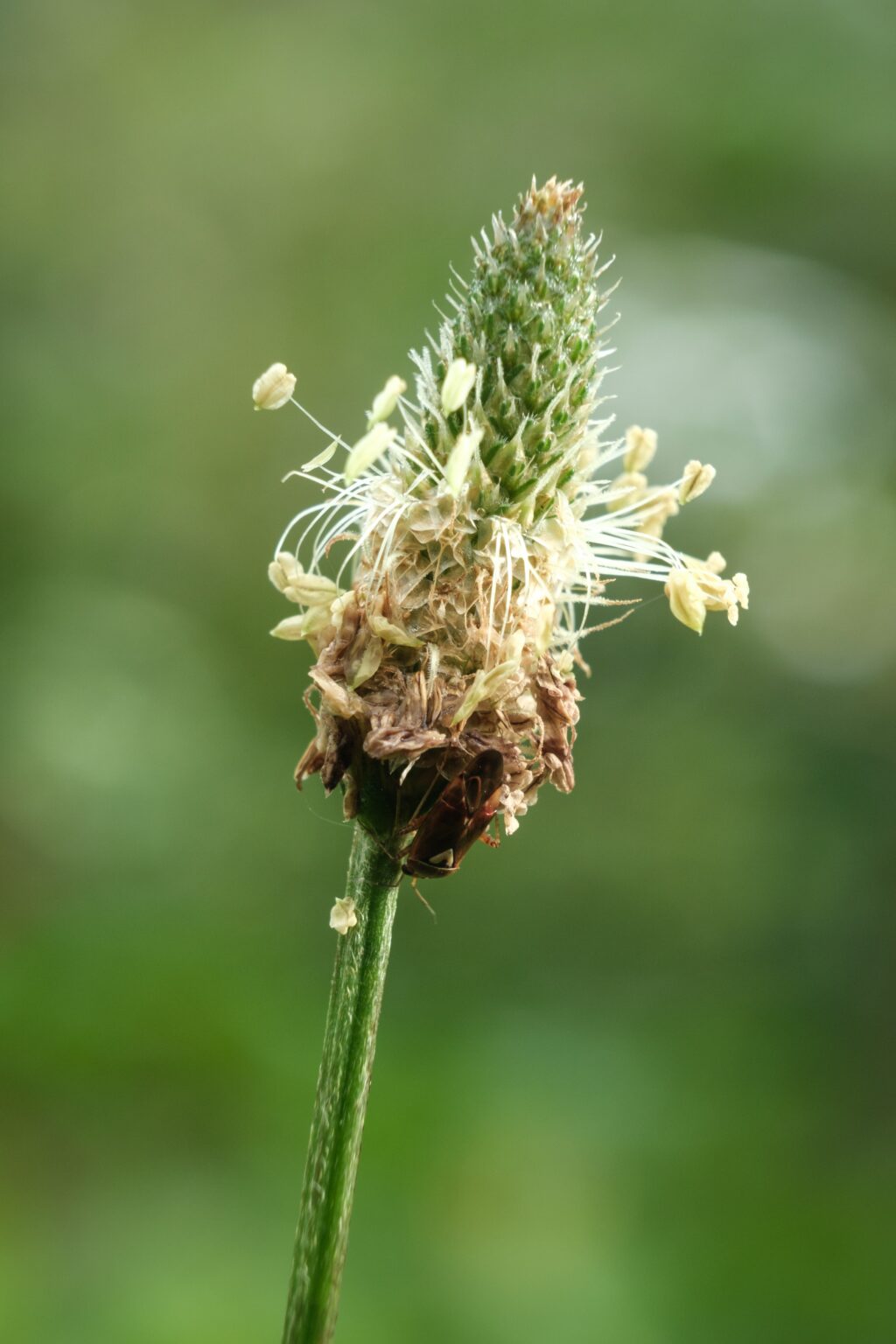Plantago spp.
Latin Name: Plantago spp.
Herb Class/Action: mucilaginous, astringent, alterative, hepatic, supports a healthy inflammatory response
Parts Used: leaves, seeds
Flavors: mineral-salty, sweet, slightly bitter
Energetics: cooling, moistening + drying
Traditional Benefits: skin support, supports the body’s natural healing process, blood support, respiratory support, immune support, bladder + urinary tract support, gut support, liver support, lubrication support, supports the eyes
Plantain presents a unique dichotomy as a gut-soother that both moistens with mucilage, and tones up tissues with astringent tannins. This healing ally helps support the urinary system and GI tract, promoting mucous membrane health and integrity.*
With therapeutic uses dating back to at least the 10th century, plantain seeds and leaves have made their way into many a modern herbalist’s toolkit. Both the leaves and seeds can be harvested nearly anytime, and this availability makes it a popular herbal remedy.
Primarily, Plantain Leaf is used to help support three different systems: the skin (when applied topically), and the respiratory system, and the digestive/urinary systems (when consumed internally). Plantain tea—made from plantain leaves—is one of the most popular and effective preparation methods, though you can find plantain leaf tinctures and capsules as well.

For the skin, plantain leaf is known for its ability to promote a healthy inflammatory response and support discomfort. As a cooling and balancing (moistening or drying depending on what the tissues need) herb, it helps soothe and protect while supporting the natural healing process. One of its most interesting characteristics of the leaf itself is the ability to draw complaints out of the skin – it’s been shown effective for bringing a pimple to a head or drawing a splinter or bee stinger out of a wound.
When its leaves or seeds are consumed, plantain’s benefits are even more impressive. Just like it helps to promote a healthy inflammatory response within the skin, plantain can do the same internally. It’s also been shown to have microbiome-balancing qualities, which support the herb’s cooling energetics (helping to rid the body of excess “heat”).
In TCM, plantain leaves are used to help calm and support the respiratory system. As a tonifying herb, it helps support the liver, kidneys and gallbladder; urinary tract; and entire digestive system by clearing damp heat and supporting the healthy elimination of waste products.
In ancient Russia, travelers would sow plantain seeds and recite prayers to bring good luck to their journeys.

